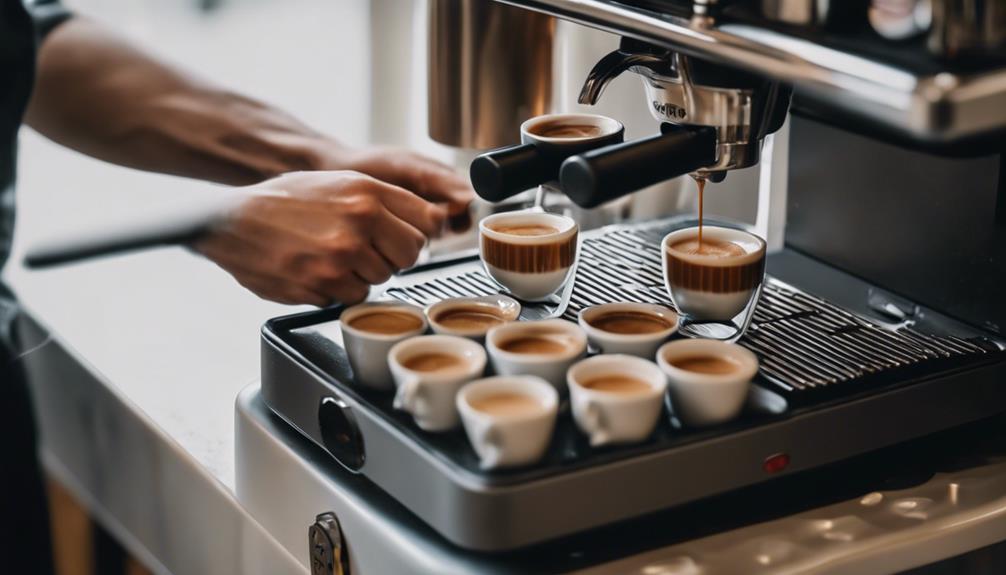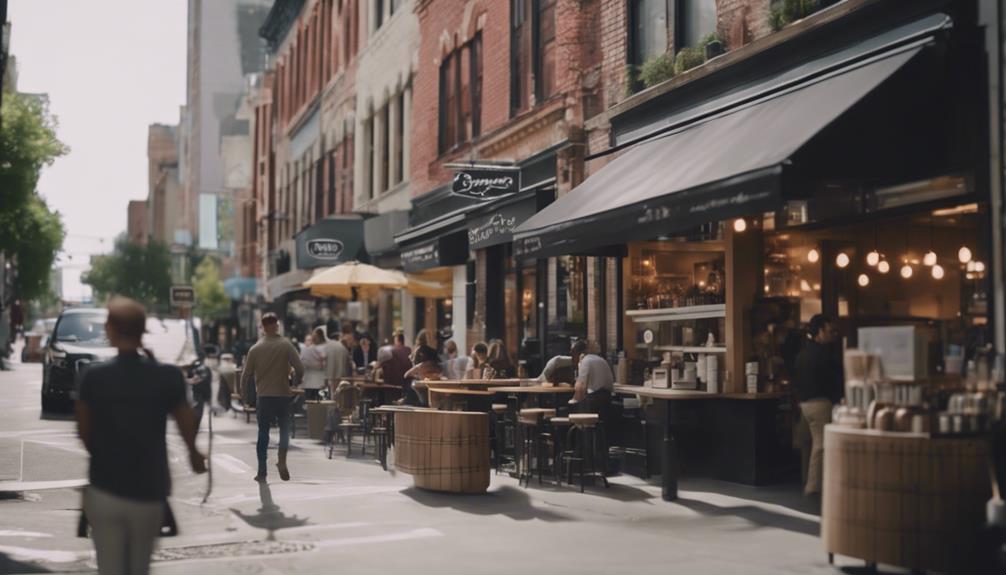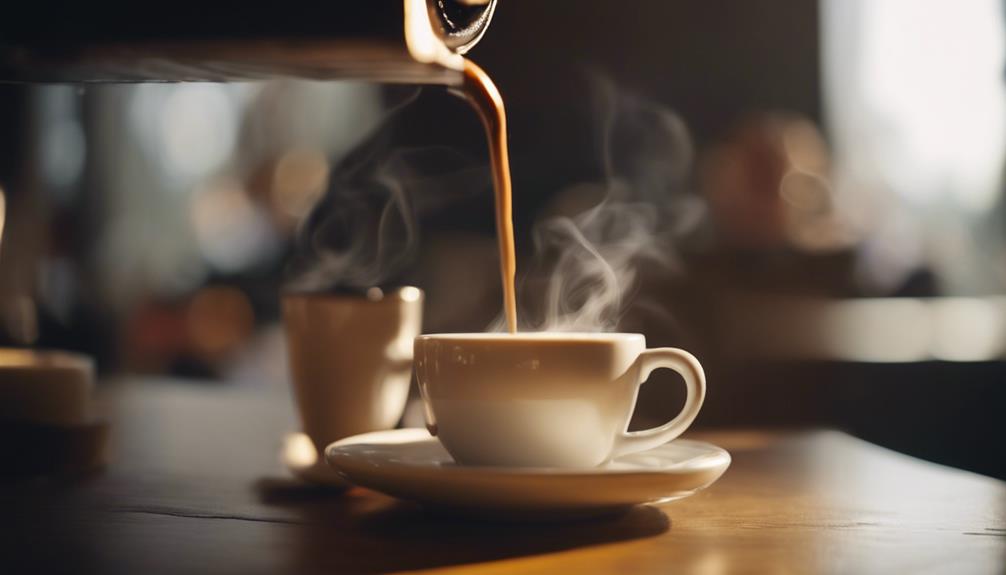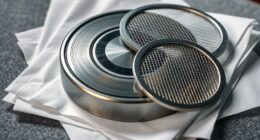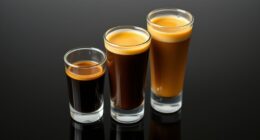To ensure that your espresso stays fresh, store it in an airtight container in the refrigerator for up to a week. The coldest section of the fridge will help in maintaining its freshness for a longer duration. Storing the espresso in glass or stainless steel containers will help in preserving its quality. By carefully timing the preparation of hot brew espresso and immediately transferring it to storage, you can also make it ahead of time. If you have day-old espresso, you can reheat it or use it to make different drinks. Troubleshooting tips can assist in adjusting any bitter flavors or machine-related issues. By following these methods and planning ahead, you can ensure a flavorful espresso experience.
Key Takeaways
- Brew espresso ahead, store in airtight container in fridge.
- Transfer hot espresso immediately to maintain freshness.
- Use glass or stainless steel containers for optimal preservation.
- Reheat day-old espresso for a quick hot coffee experience.
- Mix day-old espresso with milk or water for various espresso-based drinks.
Understanding Espresso Shelf Life
When considering making espresso ahead of time, it's important to understand its shelf life to guarantee peak freshness and quality. Brewed espresso, when stored in an airtight container in the fridge, can last about a week. To maintain its quality, it's recommended to store espresso in the coldest part of the fridge.
While consuming espresso immediately after brewing is ideal for freshness, storing it properly can extend its usability. For hot brew espresso, transferring it to an airtight container right after brewing is essential. Glass or stainless steel containers are preferred for preserving the flavor of the espresso.
Remember that the shelf life of stored espresso can vary based on factors like temperature, container type, and how it's stored. By following these storage tips, you can make sure that your espresso remains fresh and flavorful for as long as possible.
Cold Brew Vs Hot Brew Espresso
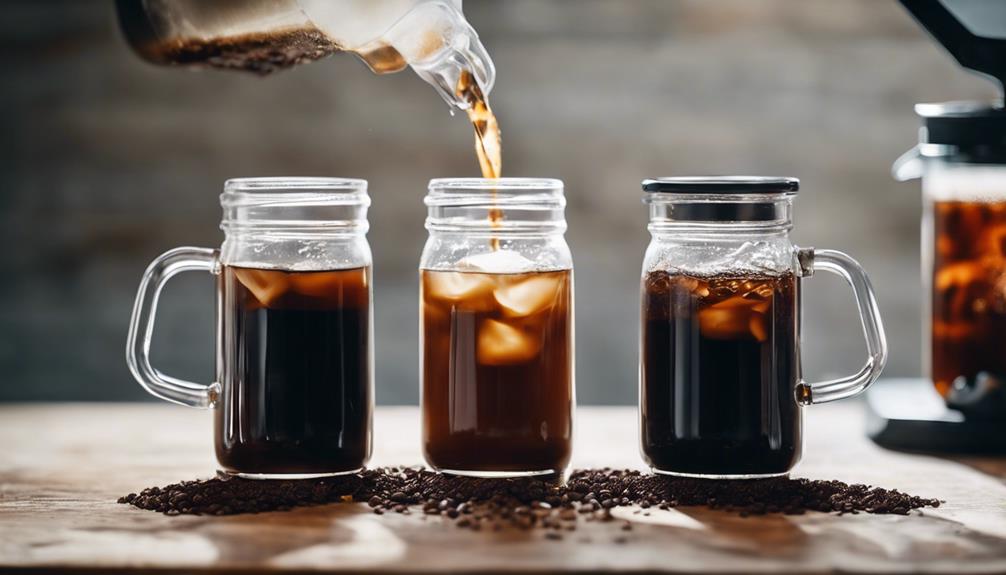
For those seeking an invigorating twist on the classic espresso experience, comparing Cold Brew and Hot Brew options can offer insight into different flavor profiles and caffeine levels.
Cold Brew Espresso is prepared by steeping coarsely ground coffee in cold water for 12-24 hours, resulting in a smooth, sweet flavor with low acidity. On the other hand, Hot Brew Espresso uses hot water under pressure for a quick extraction process, creating a more concentrated and robust flavor profile.
Cold Brew Espresso can contain slightly more caffeine due to its higher concentration, offering a unique alternative to traditional hot brew espresso.
Cold Brew Espresso is often served chilled and can be diluted to preference, while Hot Brew Espresso is typically enjoyed hot and straight.
The choice between Cold Brew and Hot Brew Espresso depends on personal preference for flavor, caffeine content, and serving temperature.
Choosing the Right Beans

When selecting beans for your espresso, opt for dark roast varieties with a robust flavor profile.
Grinding the beans coarsely is key for cold brew espresso preparation.
Make sure to use high-quality beans to achieve the desired taste and aroma in your cup.
Bean Selection Tips
Choose dark roast coffee beans with rich, full-bodied profiles to enhance the flavor of your espresso.
When selecting beans for your espresso, consider these tips:
- Coarse Grind:
For a cold brew espresso, opt for a coarse grind to improve the extraction process, leading to a smoother and less acidic result.
- High-Quality Beans:
Using high-quality beans is vital to guarantee a flavorful and aromatic cold brew espresso. Invest in beans that are freshly roasted for the best taste.
- Coffee Blends:
Experiment with different coffee blends to discover the ideal combination that suits your preferences. Blends can offer unique flavor profiles that enhance your espresso experience.
Best Roast Levels
To guarantee the best flavor and quality when making espresso ahead of time, prioritize selecting dark roast coffee beans with rich, full-bodied profiles. Dark roast beans, known for their bold flavors and oils, are excellent for maintaining a robust taste even after storage. When choosing the right beans for your espresso, opt for medium to dark roast levels to ensure a well-balanced and flavorful result. Lighter roasts may lose their complexity and intensity when stored for an extended period, affecting the overall taste of your espresso. Additionally, selecting freshly roasted beans is crucial for optimal flavor retention when preparing espresso in advance.
| Roast Level | Flavor Profile |
|---|---|
| Light | Delicate, Bright |
| Medium | Balanced, Aromatic |
| Dark | Rich, Bold |
| Extra Dark | Smoky, Intense |
Grinding Coffee Beans

For the best flavor in advance, coarsely grind your dark roast coffee beans when preparing your espresso ahead of time. By grinding your beans to a coarse texture, you can enhance the richness and depth of your espresso.
To guarantee a consistent coarseness in your grind, investing in a high-quality grinder is essential. This consistency plays a vital role in the ideal extraction of flavors from the coffee beans. Remember that the grind size directly impacts the overall taste and strength of your espresso.
Experiment with different grind sizes to find the perfect balance for your taste preferences.
Coarsely ground coffee beans are recommended for making cold brew espresso.
A fine grind may result in over-extraction, leading to a bitter taste in your espresso.
Making Cold Brew Overnight
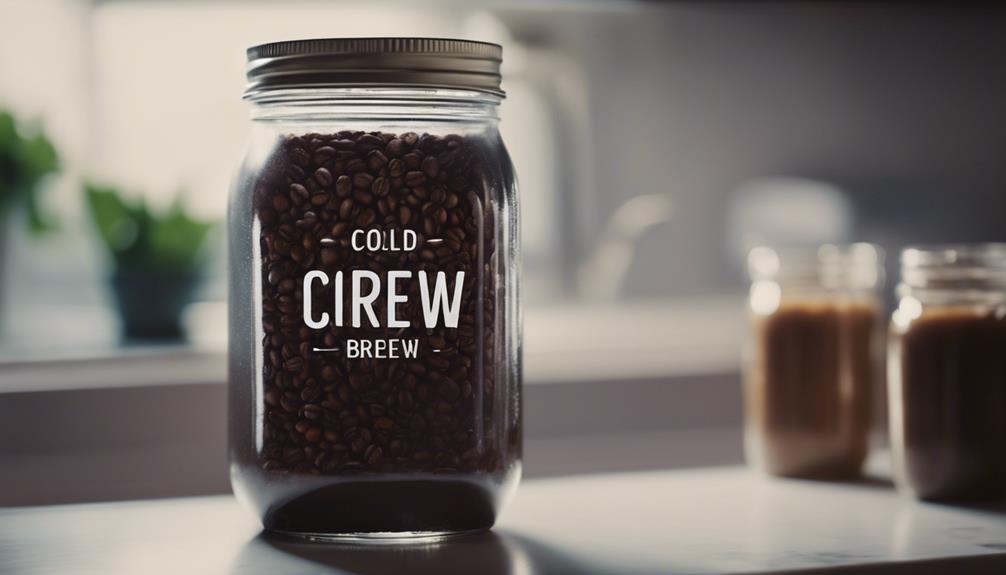
When making cold brew espresso overnight, steep coarsely ground coffee in cold water for 12-18 hours in the fridge. This process allows for a gradual extraction of flavors, resulting in a smooth, sweet taste with lower acidity compared to hot brew espresso.
The extended steeping time enhances the richness of the coffee, offering a unique flavor profile that many coffee enthusiasts appreciate.
Once the steeping period is complete, remember to strain the cold brew espresso to remove the grounds. You can then enjoy the cold brew espresso chilled on its own or use it as a base for delicious iced coffee drinks.
Cold brew espresso is an invigorating option, especially during warmer months, providing a cool and flavorful alternative to hot brewed coffee.
Experiment with different steeping times to find the perfect balance of flavor and strength for your ideal cup of cold brew.
Required Tools for Cold Brew

Consider having a mason jar or container on hand for steeping the coffee grounds when preparing cold brew espresso. To make sure your cold brew turns out just right, make sure you have the following tools ready:
- Coffee Grinder: Coarsely grinding the coffee beans is essential for extracting the best flavors in your cold brew.
- Filtered Water: Using high-quality filtered water will enhance the taste of your cold brew espresso.
- Strainer: A strainer or cheesecloth will be necessary to separate the coffee grounds from the cold brew espresso after the steeping process.
With these essential tools in your arsenal, you'll be well-equipped to start on your cold brew espresso-making journey. Remember, the key to a delicious cold brew lies not only in the quality of ingredients but also in the preparation process.
Making Hot Brew Espresso

When making hot brew espresso ahead of time, timing is crucial to guarantee freshness.
Consider storing the freshly brewed espresso in an airtight container and placing it in the refrigerator.
This method helps preserve the flavor until you're ready to enjoy a warm cup of espresso the next day.
Timing for Freshness
To preserve the best freshness of hot brew espresso, storing it in an airtight container in the fridge after immediate transfer is recommended. This practice helps maintain the flavor and quality of the espresso for next-day use.
Here are some tips to guarantee your hot brew espresso stays fresh:
- Transfer the freshly brewed espresso to a container immediately after brewing to lock in the flavor.
- Consider using glass or stainless steel containers for storing hot brew espresso as they're ideal for preserving taste.
- Even if consumed the next day, properly stored hot brew espresso can still provide an enjoyable coffee experience.
Storage Considerations
When storing hot brew espresso for next-day consumption, remember to use an airtight container to maintain its flavor and quality. By transferring any leftover hot brew espresso into an airtight container and refrigerating it, you can guarantee that it stays fresh.
Cold espresso can be enjoyed as a chilled beverage or reheated for a comforting hot cup of coffee the next day. If you're planning to make larger batches of espresso in advance, cold brew espresso might be a convenient option for you.
Remember, good hot brew espresso can preserve its taste for a while before the oils begin to turn rancid, so be mindful of the storage duration. While storing in a thermos may seem like a practical choice, it may not always be necessary for short-term storage of hot brew espresso.
Opt for an airtight container and refrigeration to keep your espresso at its best for the next day.
Storing Espresso Properly
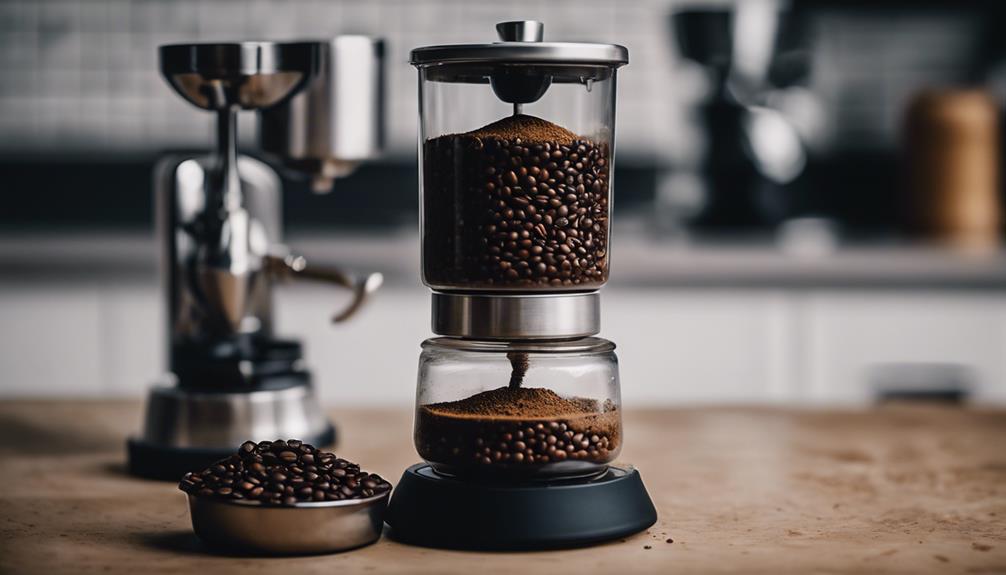
For peak freshness and flavor, store brewed espresso in an airtight container in the coldest part of your fridge for up to a week.
To guarantee your stored espresso maintains its quality, consider the following:
- Transfer hot brewed espresso immediately: Hot brewed espresso should be promptly transferred to an airtight container and placed in the fridge to preserve its flavors and aromas effectively.
- Use glass or stainless steel containers: Opt for glass or stainless steel containers when storing espresso to prevent any unwanted flavors or chemicals from leaching into your drink.
- Factors affecting shelf life: Be cautious of milk, sweeteners, and additives as they can impact the shelf life of your brewed espresso, potentially shortening the time it stays fresh.
Serving Day-Old Espresso

Consider ways to repurpose day-old espresso to create delicious and varied coffee beverages.
One option is to reheat the day-old espresso in a saucepan for a quick and convenient hot coffee experience.
You can also combine the day-old espresso with steamed milk to craft a creamy latte or with hot water for a robust Americano. To enhance the flavor, try adding cinnamon or honey to create a unique taste profile.
For a personalized touch, mix in flavored syrups to tailor the day-old espresso to your liking.
If you prefer a cold beverage, enjoy the day-old espresso over ice with milk or even better, with a scoop of ice cream for an invigorating and indulgent treat.
Troubleshooting Common Issues
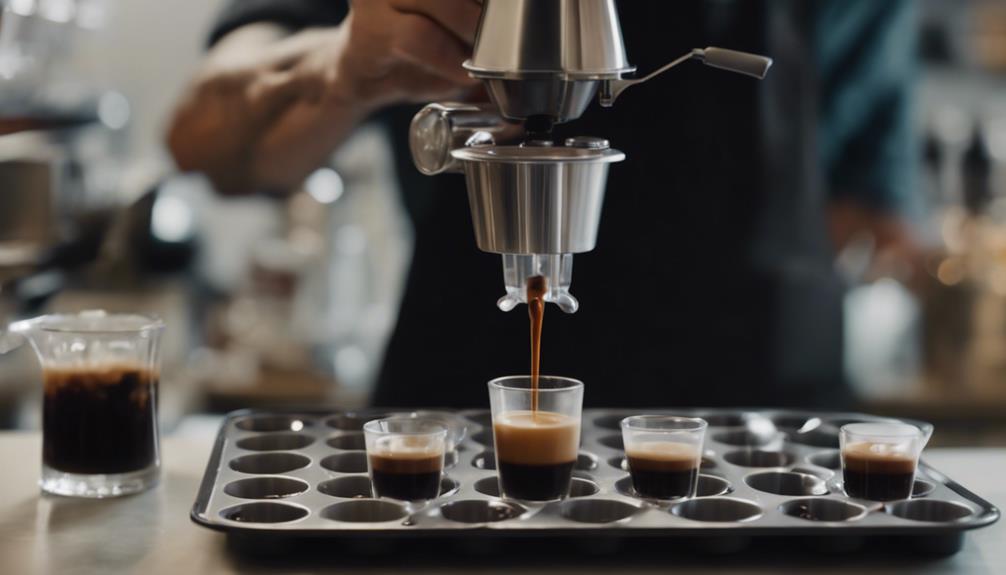
To troubleshoot common issues with your espresso brewing process, adjust the grind size and extraction time to combat bitterness and enhance flavor.
Inconsistent shot volume can be resolved by calibrating your espresso machine. Check for leaks in the portafilter or machine to prevent brewing problems.
Poor crema formation may indicate improper tamping or grind size adjustments. For best results, monitor water temperature carefully to guarantee extraction consistency and flavor control.
Remember that a hot espresso with a rich crema is a sign of a well-brewed shot. If you encounter a bitter taste, try altering the grind size and extraction time before giving up on your favorite espresso blend.
Frequently Asked Questions
How to Make Espresso in Advance?
To make espresso in advance, brew it and store it in a double-wall stainless thermos. Keep the thermos in the fridge with ice to maintain freshness. Experiment with storage times to find what works best.
Cold brew espresso is also an option for prepping ahead. Remember, espresso can keep its taste for a while, but don't let it sit too long or the oils might go rancid.
Can You Pre Make Espresso and Refrigerate It?
Yes, you can pre-make espresso and refrigerate it. Storing brewed espresso in an airtight container in the coldest part of the fridge can maintain its quality for about a week.
Factors like milk and sweeteners can impact freshness. To preserve flavor, transfer hot brew espresso to a sealed container right after brewing.
While best fresh, pre-made espresso can still be enjoyable the next day if prepared the night before.
How Do You Keep Espresso Fresh After Brewing?
To keep espresso fresh after brewing, store it in an airtight container in the coldest part of your fridge. Avoid adding milk, sweeteners, or additives until you're ready to drink it. Transfer hot espresso to the container right after brewing to lock in flavor.
Glass or stainless steel containers work best for maintaining freshness. While consuming freshly brewed espresso is ideal, proper storage can extend its shelf life.
How Long Does Espresso Last After Brewed?
Espresso, when brewed and stored correctly in the fridge, can retain freshness for approximately a week.
It's essential to transfer hot brew espresso into an airtight container immediately post-brewing to lock in its flavors.
The coldest fridge section is the best spot to maintain the quality of stored espresso.
Avoid adding milk, sweeteners, or additives to prolong the espresso's shelf life.
Opt for glass or stainless steel containers for extended flavor preservation.
Can I Use the Same Method to Make Double Espresso Ahead of Time with My Nespresso Machine?
Yes, making double espresso with Nespresso is possible ahead of time. Simply brew a double shot and pour it into a sealed container or bottle. Keep it refrigerated and use it within 24 hours for best taste. When you’re ready to enjoy, just pour and heat as desired.
Can I Make Hot Shaken Espresso Ahead of Time?
Yes, you can make hot shaken espresso ahead of time. In this hot shaken espresso tutorial, you can prepare the espresso and let it cool before shaking it with ice and any additional ingredients. This allows you to have your delicious cold espresso ready to enjoy whenever you want.
Conclusion
To sum up, preparing espresso ahead of time can be a convenient option for busy mornings or entertaining guests. By understanding the shelf life of espresso, choosing the right beans, and properly storing your brew, you can enjoy a delicious cup of coffee at any time.
Whether you opt for cold brew or hot brew espresso, with a little planning and preparation, you can have a fresh and flavorful cup ready to go whenever you need it. Remember, a little effort now can save you time later.
